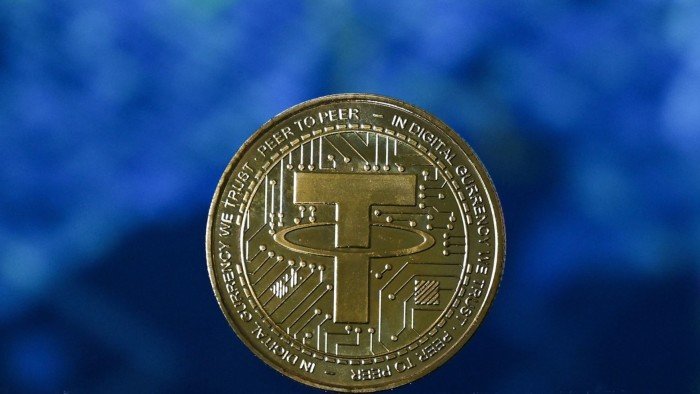Get access to the White House Watch newsletter at no charge
Your source for understanding what a second Trump presidency means for Washington, businesses, and the globe
Leading central bankers have sharply criticized stablecoins, declaring that they “underperform” on essential criteria for being widely accepted as currency, rejecting US President Donald Trump’s initiative to integrate them into mainstream finance.
The Bank for International Settlements noted that stablecoins do not meet the three crucial requirements for any form of currency, as they are unsupported by central banks, lack adequate protections against misuse, and do not possess the necessary funding flexibility to facilitate loan generation.
Stablecoins aim to bridge the gap between unpredictable cryptocurrencies like Bitcoin and conventional financial systems by pegging their value to fiat currencies with backing from stable assets such as government bonds and money market funds.
Proponents claim that they offer more efficiency in transferring funds online compared to traditional bank transactions. However, the ability to hold them anonymously has attracted not only crypto traders but also criminals involved in activities like drug trafficking and money laundering.
Hyun Song Shin, the head of the BIS monetary and economic department, warned that stablecoins pose a risk of sudden withdrawals by investors. “The key question is, what would happen if such redemptions occur in the stablecoin sector?” he remarked.
In response to the increasing use of stablecoins, both the US and UK governments are creating regulatory structures. Currently, there are roughly $250 billion in circulation, primarily dominated by dollar-pegged tokens such as Tether and Circle’s USDC.

Since Trump’s election victory last year, which came with a promise to establish the US as the global crypto hub, his administration has lifted numerous restrictions on cryptocurrency that were put in place by Biden’s administration. Additionally, he supports World Liberty Financial, a cryptocurrency organization that has its own stablecoin, USD1.
The BIS, representing the world’s principal central banks, stated in a chapter from its recently published annual economic report that while the future involvement of stablecoins remains ambiguous, their inadequate performance on the three criteria suggests they may only play a minor role.
According to the report, stablecoins “have become a preferred option for illegal activities designed to circumvent safety measures”, highlighting their absence of the traditional finance “know-your-customer” protocols.
The BIS found that stablecoins “underperform” in their function as a settlement medium because they lack support from central banks, which function as lenders of last resort during economic crises.
“Stablecoins often exhibit fluctuating exchange rates, which undermines their stability,” it stated. “They also cannot fulfill the ‘no questions asked’ principle of bank-issued currency.”
Due to the necessity of being fully backed by equivalent assets, stablecoins lack the “elasticity” that allows banks to generate additional money through lending, the BIS added.
“Any new issuance requires complete upfront payment from holders, which imposes a ‘cash-in-advance’ limitation and undermines elasticity,” it noted.
The BIS cautioned that “loss of monetary sovereignty and capital flight are significant worries, especially for developing and emerging economies,” adding that bank-controlled stablecoins “could introduce new risks based on their legal and governance structures.”
The organization believes it would be preferable to develop a centralized database of tokenized deposits from both central and commercial banks to enhance the speed and reduce costs of cross-border transactions.
It is currently testing such a framework with seven major central banks and 43 commercial institutions under a project named Agorá.

The BIS stated, “Society faces a decision.” The monetary system has the potential to evolve into a next-generation framework grounded in well-established trust and advanced, programmable infrastructures.
“Alternatively, society might need to rediscover historical lessons about the downsides of unreliable money, with significant societal impacts, by navigating a path that involves private digital currencies failing the triple criteria of stability, flexibility, and integrity.”


